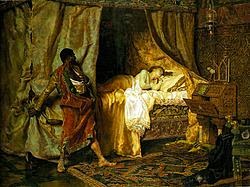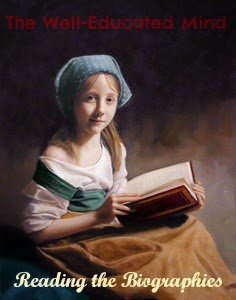I’ve decided to join O at Behold the Stars in her reading of The Canterbury Tales. Yes, it’s one of my projects for the year, my The Canterbury Tales/The Brubury Tales Project, but I’ve been really terrible at keeping up on my projects so I’m hoping someone else will give me that kick where I so desperately need it, or at the very least, drag me along.
I’m starting off reading from The Portable Chaucer with a translation by Theodore Morrison, but I suspect that it doesn’t include all the tales, so once the library book comes in, I’ll be reading The Penguin edition translated by Nevill Coghill. O, the clever person that she is, is reading it in Middle English. Something to aspire to but not now. :-Z
 |
Portrait of Chaucer – 17th century
source Wikipedia |
It is surmised that Chaucer met Bocaccio, who perhaps influenced this work, as it begins in a similar way to Bocaccio’s The Decameron. In The Decameron, a number of lords and ladies escape the Black Death of Florence and begin a story-telling marathon in their exile, whereas in The Canterbury Tales, a group of pilgrims are on their way to Canterbury and on their journey, each tells a tale. Originally Chaucer meant each pilgrim to tell four tales, two on the way there and two on the way back, but the manuscript breaks off with them still on their travels, so the final intent of Chaucer remains unknown. The original order of the tales is also unclear, but going with O’s the Riverside Chaucer, we’ll be breaking the tales down as follows:
Week 1: General Prologue
Week 2: The Knight’s Tale
Week 3: The Miller’s Prologue and Tale, The Reeve’s Prologue and Tale, The Cook’s Prologue and Tale
Week 4: The Man Of Law’s Introduction, Prologue, Tale, and Epilogue
Week 5: The Wife of Bath’s Prologue and Tale
Week 6: The Friar’s Prologue and Tale, The Summoner’s Prologue and Tale
Week 7: The Clerk’s Prologue and Tale
Week 8: The Merchant’s Prologue, Tale, and Epilogue
Week 9: The Squire’s Introduction and Tale, The Franklin’s Prologue and Tale
Week 10: The Physician’s Tale, The Pardoner’s Introduction, Prologue, and Tale, The Shipman’s Tale
Week 11: The Prioress’s Prologue and Tale, The Prologue and Tale of Sir Thopas
Week 12: The Tale of Melibee
Week 13: The Monk’s Prologue and Tale, The Nun Priest’s Prologue, Tale, and Epilogue
Week 14: The Second Nun’s Prologue and Tale, The Canon’s Yeoman’s Prologue and Tale
Week 15: The Manciple’s Prologue and Tale, The Parson’s Prologue and Tale
Week 16: Chaucer’s Retraction. Conclusion.
If I haven’t finished by the beginning of November, you can all throw rotten tomatoes at me.
So let’s start off with The General Prologue.
Initially Chaucer describes the setting of the pilgrims’ starting point, in a beautiful poetic manner that establishes the ambiance of a lovely spring day.
“As soon as April pierces to the root
The drought of March, and bathes each bud and shoot
Through every vein of sap with gentle showers
From whose engendering liquor spring the flowers;
When zephyrs have breathed softly all about
Inspiring every wood and field to sprout,
And in the zodiac the youthful sun
His journey halfway through the Ram has run;
When little birds are busy with their song
Who sleep with open eyes the whole night long
Life stirs their hearts and tingles in them so,
Then people long on pilgrimage to go, …..”
Chaucer, himself one of the pilgrims, arrives at Southwark at the Tabard, and meets with twenty-nine other pilgrims, all ready to set out for Canterbury. He introduces each, starting with The Knight, who is is honoured and respected and who has fought many battles in the name of Christ. Yet in spite of his skill with a sword, he is deferential and temperate, embracing his code of chivalry. His son, a Squire, is with him, a lad who is determined to have exploits to honour his lady. He also has a Yeoman traveling with him, tidy and trim with a doughty demeanour, a strong bow and a St. Christopher’s medal.
A Nun, known as Madame Eglantine, carries the dignity of religion with her, showing a love and empathy for animals and a tidiness that becomes her. Nevertheless, this Prioress is attached to courtly ways and displays a pride in her accomplishments. She is escorted by a Priest and an Attendant Nun who acts as her secretary.
Next, a Monk is introduced and while his description is an unexpectedly unusual description for a Monk, during Chaucer’s time the church was experiencing a degradation of religion and many of its adherents were infected with worldly desires. This Monk much prefers fashion and hunting to the austerity of his order. It sounds like Chaucer, the narrator, approves of his designs and exploits.
The next in line is a Friar, who is gay and jolly. He is like a roving churchman who performs church services as he goes. Yet, again, this Friar likes wealthy men, pretty women and money given as penance. He prefers bars and barmaids to giving consolation and blessings to lepers. Our rather unreligious Friar is christened Hubert.
The Merchant is very caught up in his business and enjoys the elevation of his station. He knows his job well and is very full of himself, yet is he as rich as he seems? Not only his financial acumen is highlighted, but his personal shrewdness, and the narrator confesses that he is never able to discover his name.
An Oxford Student shows his poverty by his shabby clothes, but exhibits a richness in learning and the value of philosophy. He is willing to both learn and teach.
A crafty, yet diplomatic Lawyer or The Man of Law is one of the party. He appears efficient and respected in his field.
The Franklin, or the “free man,” loves his food so much that there is always food at his table.
Five Guildsmen, a Weaver, a Dyer, a Carpenter, a Tapestry-maker and a Haberdasher are wealthy and respected in their crafts. Their livery identifies their artistry. With them, they carry a Cook who ensures that they eat well.
The Skipper or Shipman is well-traveled and experienced at his job, but he is not shy about stealing from the wine casks. He does not appear at home on a horse, riding it as if he were at sea.
 |
| The Physician
|
The Physician is particularly interesting. I sense a sarcasm within Chaucer’s description and though he seems to know his profession and be able to deal with a number of maladies, he takes advantage of his patients for financial gain, and his spiritual life is less than ideal.
“Of nothing in excess would he admit.
He gave but little heed to Holy Writ.
His clothes were lined with taffeta; their hue
Was all of blood read and of Persian blue ..”
Next, The Woman or Wife of Bath is a rather large, broad-beamed woman, but she is dressed well and has a skill at weaving that is unsurpassed. She’s had many husbands and lovers and is well-versed in the art of love. She is also well-travelled.
The Parson is given a long description praising his integrity, his sacrifice and his faithful adherence to his faith. He is patient, gives offerings to the poor, and tries to teach by being a good example to others. He is a wonderful illustration of a man of virtue, and a credit to his church flock.
 |
The Plowman c. 1525
Hans Holbein the Younger |
We meet the brother of The Parson, The Plowman. He loves God with all his heart, and is in charity with everyone. He tithes regularly and his clothes reflect his humble station.
A big beefy man is The Miller and his physicality is emphasized, along with his rather unpleasant countenance, and his proclivity for stealing corn and selling it at three times the price. He leads the pilgrims out of town whilst blowing his bagpipes.
The Manciple, or officer who buys supplies for a college, monastery or other institution, is lacking a formal education but is, nevertheless, ingenious in his dealings and more adroit than his clients. He is a master at deception.
Possessing a fiery disposition and a wiry frame, The Reeve, or steward of a manor, is of questionable character. While he ensures that no one steals from his master, he himself avails himself of that which belongs to his employer. He is so shrewd that no one can catch him in his dishonesty.
The Summoner, a man who brings those who are in violation of church law to ecclesiastical court, is a lecherous character with a fearsome leprous face. He uses the little Latin he knows to cover his intellectual inadequacy. He does not have a respect for his vocation.
The Pardoner, one who grants papal indulgences, is a waxy, greasy sort of fellow, who we are led to disbelieve. He carries with him a number of fake relics, which he sells to unsuspecting, trusting people. He is religious and respectable on the surface, but underneath, he is rotten.
The Host is a big, cheery man who appears to have control of the group. He sets the rules out for the tales, four for each pilgrim, two going to Canterbury and two returning. We will see that this plan does not pan out.
The Narrator: is it Chaucer, or is it Chaucer but not really Chaucer? We will see, as we go.
The portraits of these pilgrims show the social organization of Chaucer’s England. First comes the Knight, the Squire and the Yeoman, which represent the nobility or the upper class. Next comes the Clergy: a prioress with her attendent priest and helper, a Monk and a Friar. After the clergy comes the pilgrims who represent the merchantiles and professions of the cities and towns of Chaucer’s England. Finally we are introduced to a number of figures who perhaps don’t represent a particular group, but nevertheless have a firm identity in Chaucer’s time.
Chaucer’s depiction of the pilgrims follows the Medieval literary technique of description in that description can be accomplished in two ways: using both internal qualities and external attributes. We can ask ourselves as we read, how these two means of description affect the reader; which might elicit a stronger response and how does one influence the other to create tension within a story. Chaucer uses each to make a social commentary and his means of using this technique is quite fascinating. You get a sense with Chaucer’s descriptions, that while he can appear to be praising and giving his characters good qualities, at times he is, in fact, doing quite the opposite.






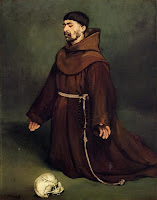
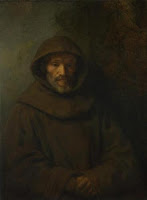






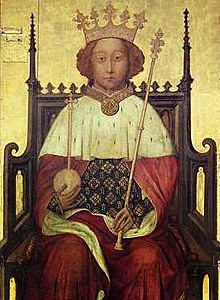


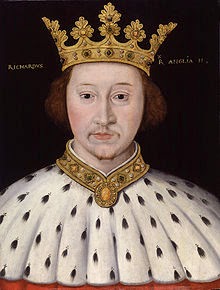.jpg)


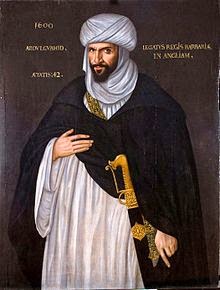
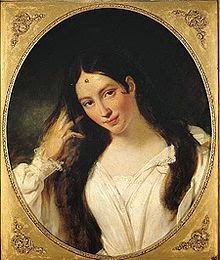_par_F._Bouchot.jpg)
